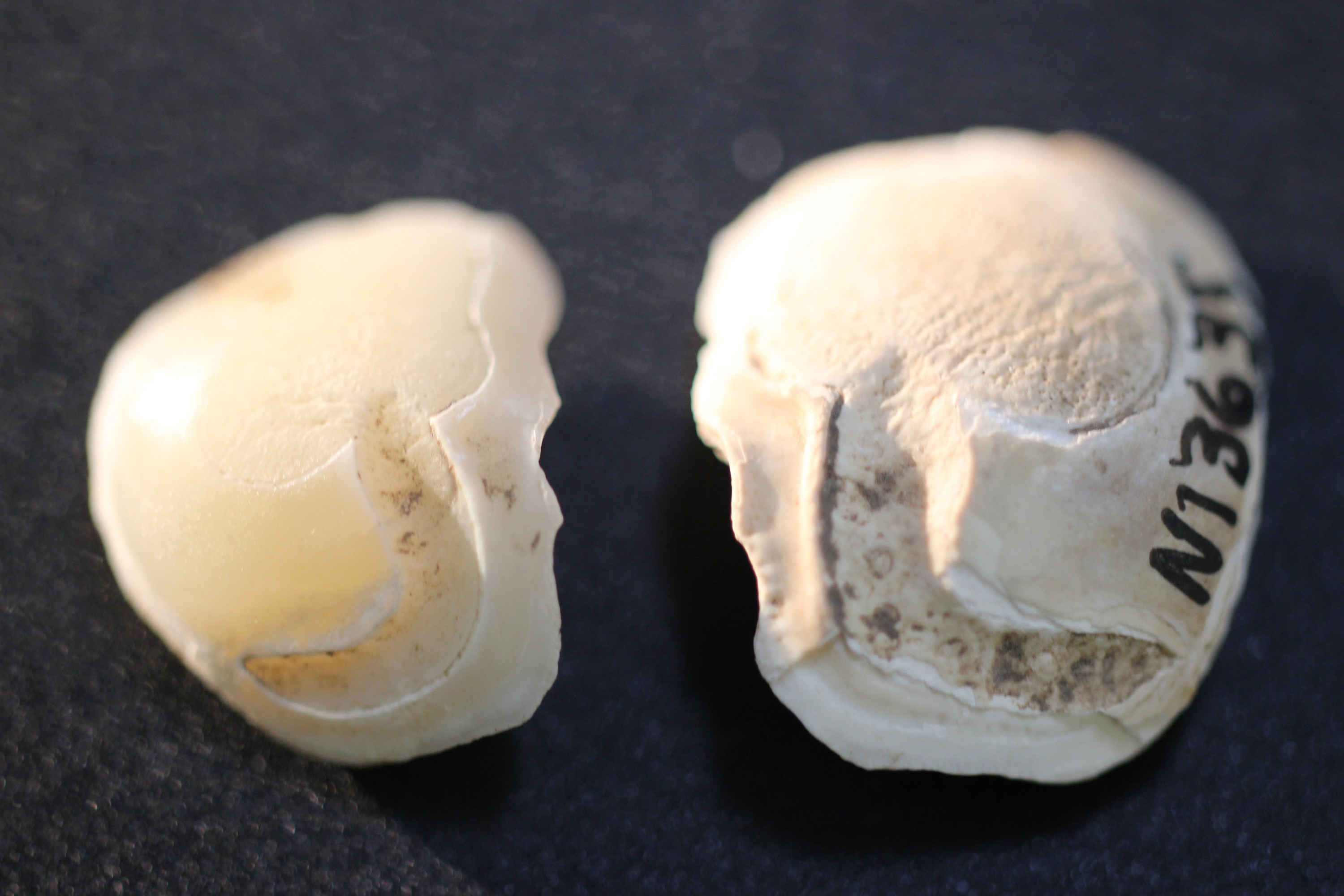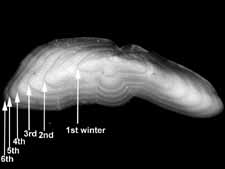
If you found these unusual “stones” would you know what they are? They are small, measuring about 3/4″ long and about 1/4″ thick.
Answer:
Often when identifying unknown specimens it helps to handle the objects, to get a feel for the density and texture. In this case it would help; these objects are relatively dense and are mostly smooth (which would help distinguish them from fossil popcorn, Paul!). Congrats to those who recognized these as otoliths, or ear stones, of the Freshwater Drum (also known as the Sheephead ) Aplodinotus grunniens.

Otoliths in humans.
Most vertebrates have some type of stones in the inner ears. In bony fish there are three pairs; 1 large pair (the sagittae) and 2 small pairs (the lapilli and the asteriscii). The large pair we picture here are the sagittae of the Freshwater Drum. So why do we have stones in our ears!? Yes, we humans have them too! In humans there are lots of very small stones, made up of calcium carbonate, and measuring only 3 – 30 microns in length. These small otoliths rest in a gelatinous membrane covering small hair cells. Motions of the head cause the otoliths to pull on the hair cells which stimulate nerves that signal the position of the head in relation to the rest of the body. The otoliths in vertebrates are used as indicators of gravity, balance, movement, and direction.

Growth rings in a fish otolith. Photo courtesy of www.marinebiodiversity.ca
So why do we care about these weird ear stones of fish!? For one thing they can be used to identify fish species. The shape of the otolith is distinctive enough that species can be determined by examining the otolith. They are important in wildlife biology when examining stomach contents of birds and marine mammals to learn about the food habits of these species. They are also useful in archaeology for a couple of reasons. Not only can we identify the species of fish consumed at a site but otoliths are good indicators of the age of the fish, and thus the season that the site was occupied! If an otolith is sectioned and then examined under a microscope, alternating layers of translucent and opaque material can be seen. Like rings on a tree these can be counted to ascertain the age of the fish when it died. Unlike bone, which is laid down and then remodeled (such as in the healing of bones after a fracture) otoliths grow throughout the life of the animal. Once you know the age that the fish died, you can estimate the season of the year by the knowing the approximate date of birth of the fish species.
Otoliths from the Freshwater Drum can be found on beaches today, especially along the shores of Lake Erie. They are called lucky stones by some beachcombers. A sulcus, or groove, is on one surface of the otolith and appears as the letter L on the stone from the fish’s right side and the letter J from the left side.
Pharyngeal teeth of the Freshwater Drum
What a cool fish! Not only does the Freshwater Drum have weird ear stones but it has unusual teeth!
Notifications